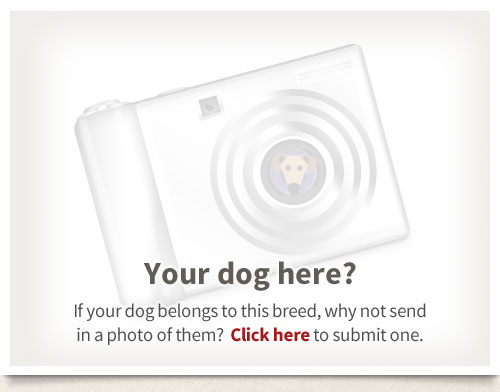Origin
The Anatolian Shepherd Dog (also known as the Anatolian Karabash or Coban Kopegi) originated in Turkey, possibly from Babylonian Mastiff-type dogs. Exactly when the breed was developed is uncertain, but Assyrian artefacts depicting dogs of the type have been dated to 1000 BC and it is probable that the breed may be considerably older than this. Through the centuries the task of the Anatolian Shepherd has been to guard his master’s flocks and to protect them from thieves, marauding wolves and other predators. They were never considered as pets, only as valuable workers needing minimal human contact and direction. To ensure that the ability to live and work under the harshest of conditions did not decline only the finest and fittest were allowed to survive and breed. Stable temperament was also a criterion for survival as the Anatolian Shepherd Dogs had to be tolerant of people and village life when flocks were gathered for sale. The preferred technique of most livestock guardians is to interrupt the stalk, chase, kill pattern of predators, warning them off and avoiding the risk of injury to themselves. However, should this action fail there will be no hesitation in attacking the intruder whatever its size or species. Although not widely known outside Turkey Anatolian Shepherd Dogs are proving their worth elsewhere with farmers who would sooner deter predators than poison, trap, or shoot them. The first Anatolians were imported into the U.K. in 1965 where they were registered as Anatolian (Karabash) Dogs, the name being changed to Anatolian Shepherd Dog in the 1980s.
Character
This is a large powerful dog who carries himself with calm pride and possesses intelligence and a strong will. As might be expected he is an outstanding guard and and vigilant watchdog who will fiercely protect and defend his household (people and animals) and what he perceives to be his territory. He is affectionate with all the family, but does have an inclination to reserve his deepest loyalty and respect for a single person. Strangers are usually regarded with suspicion but he will accept them if properly introduced, although it is improbable that he will make friendly overtures, preferring to keep them under a watchful eye. It is likely that even well known visitors to the home will find their movements quietly blocked should they attempt to wander around unaccompanied by a family member. It is wise to ensure that the area which he will patrol, be it garden or paddocks, is well defined in order that he should know what is his territory. Failure to establish perimeter lines may mean that he will select his own territory to protect, which may include neighbouring property, and which may involve crossing roads or facing other hazards. He is physically equipped to live outside in all weathers, but a comfortable shelter from the elements should always be available to him. If he is to be an outside dog it should be borne in mind that he is inclined to bark during the hours of darkness to inform any predators or would-be intruders within hearing distance that he is on duty. He is generally good with children but, unless very well socialized, can be intolerant of other dogs. The necessary confinement of town and city life does not suit him, this is a dog that needs space and broad vistas to survey. Over many hundreds of years certain traits have been selected for when breeding Anatolian Shepherd Dogs. These characteristics include independence, protectiveness, distrust of strangers, decision-making ability, courage and determination. As these qualities remain undiluted in the Anatolian it is apparent that he is a challenging prospect as a companion and certainly not a dog for the novice. Given firm, consistent leadership and an owner who is aware of the responsibility of, and commitment to, the training and intensive socialization required by a guardian he will be a loyal and rewarding friend.
Exercise
If kept as a flock or herd guardian the Anatolian will exercise himself by patrolling his boundaries. If kept as a companion a long daily walk is needed to keep him physically fit and mentally stimulated. He is a naturally active and agile dog with great stamina and endurance and will appreciate the opportunity to run and play freely if a securely fenced area is available. As with all large breeds the exercise of puppies should be carefully monitored and controlled. Long walks, rough play, jumping, stairs, and all forms of high impact activities should be avoided until the pup’s vulnerable joints and bones have matured.
Training
Basic obedience training should commence with the puppy as soon as possible. This is a hefty breed and good verbal control is essential as, in a test of strength, the owner would inevitably be the loser. The Anatolian is very intelligent but he is self-reliant and bred to use his own judgement and make decisions with little human interference. This may make training somewhat demanding, but any hurdles may be overcome with patience, consistency and benign firmness. All training should be based on mutual affection and respect. He is a sensitive and dignified dog and harsh physical and verbal corrections will be met with resentment and distain. Training sessions should be kept short and interesting and his good efforts and accomplishments rewarded with praise and treats. Socialization also should start in early puppyhood and should be extensive and ongoing. This will reduce the chance of him becoming antagonistic toward his own kind or over-protective and he will mature into a well-adjusted adult who is a pleasure to live with and acceptable wherever he goes.
Health
- Hypothyroidism
- entropion
- hip dysplasia
- sensitive to anaesthetic agents
- immune system slow to develop.
Pictures
Some photographs of the Anatolian Shepherd Dog...





